Programme
Wolfgang Amadeus Mozart
Symphony No. 36 in C major, K 425 “Linz” (26')
— Intermission —
Bohuslav Martinů
Ariadne, concert performance of the opera, H 370 (45')
Secure your seat for the 2025/2026 season – presales are open.
Choose SubscriptionPrincipal guest conductor Tomáš Netopil will be leading the Czech Philharmonic for the first time in Mozart’s Linz Symphony. However, the bulk of the programme will consist of a concert performance of Bohuslav Martinů’s one-act opera Ariane. It will be sung in the original French.
Subscription series C | Duration of the programme 1 hour 20 minutes
Wolfgang Amadeus Mozart
Symphony No. 36 in C major, K 425 “Linz” (26')
— Intermission —
Bohuslav Martinů
Ariadne, concert performance of the opera, H 370 (45')
Simona Šaturová Ariane
Peter Kellner Thésée
Richard Samek Bouroun / Watchman
Jozef Benci Minotaur
Richard Novák Old Man
Prague Philharmonic Choir 6 youths of Athens
Šárka Csölle Knížetová choirmaster
Tomáš Netopil conductor
Czech Philharmonic
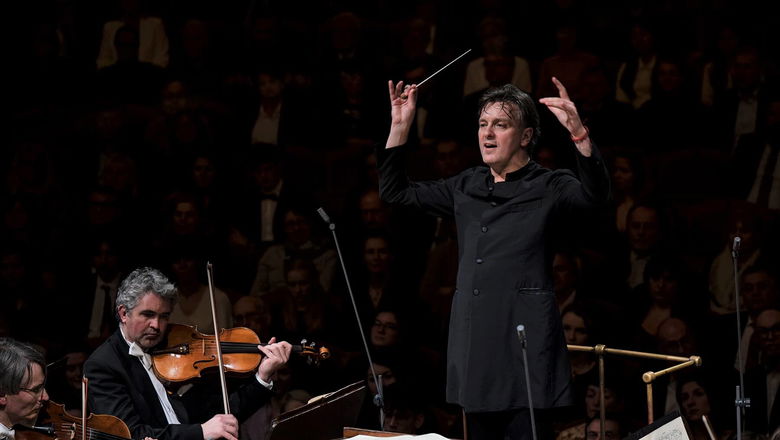
These concerts are supported financially by the Bohuslav Martinů Foundation.

The concert on 8 December 2023 is dedicated to the 100th anniversary of the start of regular radio broadcasting in Czechoslovakia. The concert will be broadcast live on Czech Radio Vltava.

Simona Šaturová soprano
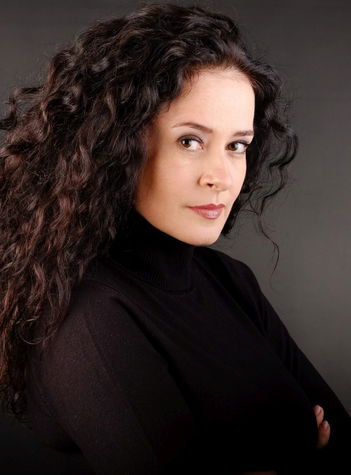
Simona Houda-Šaturová is a sought-after performer of Mozart (“She sings Konstanze with such amazing coloraturas, deeply felt pianos and stylistic perfection that take the breath away,” Der neue Merker) and bel canto roles, as well as an internationally renowned concert artist. The highlights of recent years include her performances with the Wiener and Münchner Philharmonikers, the Tokyo and Boston Symphony Orchestras, the Lucerne Festival Orchestra, and a tour with the Bamberger Symphoniker, conducted by Jakub Hrůša. She has also sung in productions of the Mozart–Da Ponte trilogy at the Théâtre Royal de la Monnaie in Brussels, portraying Donna Anna (Don Giovanni) and debuting as Countess Almaviva (Le nozze di Figaro).
Her extensive discography includes recordings for Supraphon, Sony BMG and other labels. She lent her voice to the actress performing the prima donna Caterina Gabrielli in the film Il Boemo.
Simona Houda-Šaturová studied at the Bratislava Conservatory, and further honed her skills with Ileana Cotrubas and Margreet Honig. She has received the Charlotte and Walter Hamel-Stiftung Preis, the Czech Thalia Prize and other coveted accolades.
Peter Kellner bass, bass baritone
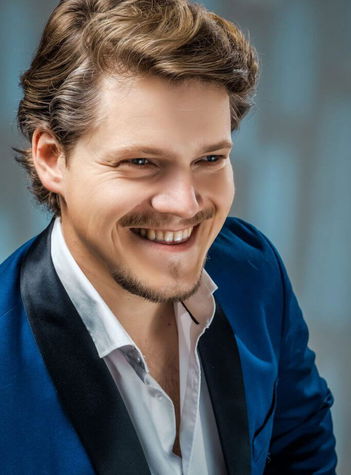
After a 3-year engagement at Oper Graz, the young Slovakian bass Peter Kellner joined the ensemble of the Vienna State Opera in 2018. In the 2022/23 season he returned to the Royal Opera House Covent Garden in London as Papageno and made his MET debut as Colline. He can be seen at Berlin Staatsoper, Slovak National Theatre and famous festivals, such as Glyndebourne or Salzburg, as well. At his parent company in Vienna he performs the roles of Publio, Figaro, Papageno, Leporello and Guglielmo in Mozart’s operas, and Basilio in Il Barbiere di Siviglia.
Mr. Kellner studied at the conservatory in Košice with M. Adamenko, at the Mozarteum in Salzburg with Boris Bakow, and he completed his bachelor’s degree with Antonio Soll at the Kunstuniversität Graz. He was awarded the Independent Opera Fellowship at the Wigmore Hall Song Competition, the second prize and the audience award at the International Mozart Competition Salzburg and the first prize at the International Ferruccio Tagliavini Competition in Deutschlandsberg.
Richard Samek tenor
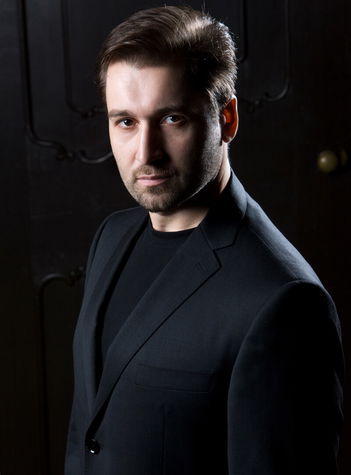
Prague audiences have primarily heard and seen the tenor Richard Samek at the National Theatre, where he has portrayed the Prince (Rusalka), Don Ottavio (Don Giovanni), Tamino (Die Zauberflöte) and Alfredo (La traviata). He has also dazzled in Classical and Romantic roles (as well as the 20th-century repertoire) in Plzeň, Brno and Ostrava, as well as abroad, including in Germany (four years ago, he appeared at the prestigious Semperoper) and France.
His performances are captured on recordings of Johann Strauss’s operettas, and operas by Bedřich Smetana (with the BBC Symphony Orchestra, conducted by Jiří Bělohlávek) and Zdeněk Fibich. His discography includes an acclaimed recording of Gustav Mahler’s Das Lied von der Erde, made with the mezzo-soprano Dagmar Pecková.
Moreover, Richard Samek is a sought-after concert soloist, frequently performing with the Czech and Brno Philharmonics (appearing at major Czech festivals too). He has also closely collaborated with the Orchestra dell’Academia Nazionale di Santa Cecilia, with whom in the current season he will give a concert of Antonín Dvořák’s cantata The Spectre’s Bride.
Jozef Benci bass
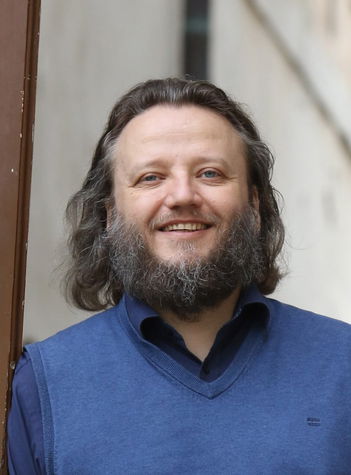
Jozef Benci is a distinguished opera and oratorio performer. A graduate of the Academy of Performing Arts in Bratislava and the Janáček Academy of Music and Performing Arts in Brno, he is a soloist of the Slovak National Theatre and Prague’s National Theatre, and has frequently been invited to appear with the Czech and Slovak Philharmonics. Milestones in his career include victory at the prestigious George Enescu International Competition in Bucharest (2001) and an acclaimed performance of a concert version of Bedřich Smetana’s opera The Bartered Bride (the role of Kecal) with the BBC Symphony Orchestra, conducted by Jiří Bělohlávek, at the Barbican Centre in London, a recording of which advanced to the final of the Grammy Awards, as well as collaboration with the celebrated soprano Edita Gruberová.
Besides being an accomplished performer of Classical and Romantic opera roles, he is a sought-after concert soloist. His repertoire includes Janáček (Glagolitic Mass, which he recorded with the Prague Radio Symphony Orchestra and Tomáš Netopil), Verdi (performances with the conductor Nello Santi) and Dvořák (this July, he sang in his Stabat Mater opposite the Czech Philharmonic; and at this year’s Dvořák Prague festival he dazzled in his Te Deum).
Richard Novák bass
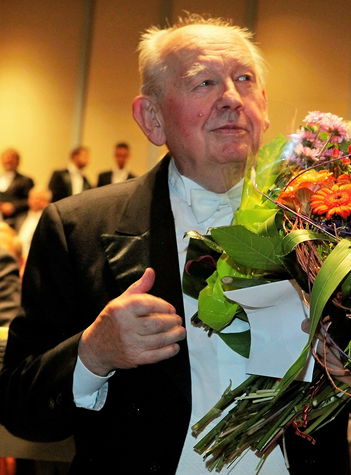
Richard Novák is a legendary opera singer, composer and organist. After completing secondary school in Telč, he went on to study theology at the seminary in Brno and, following its abolition by the Communists, enrolled at the local conservatory (Jiří Wooth). In 1961, he came second at the vocal competition in Toulouse, a year later he became a laureate at Hertogenbosch, the Netherlands.
In 1954, Novák was named am opera soloist in Ostrava; in 1961, he was appointed a soloist of the Janáček Theatre in Brno. He has appeared as a guest in Graz, Buenos Aires (Teatro Colón), Paris, Madrid and Venice, and also sang at the Salzburger Festspiele (in Janáček’s From the House of the Dead, conducted by Claudio Abbado). He has to date portrayed more than 150 opera roles.
Moreover, Richard Novák has performed oratorios, with the Czech and Slovak Philharmonics, and other orchestras. His repertoire also includes song cycles and contemporary Czech music.
In 2001, at the age of 70, he received the Thalia Prize for lifelong achievement. Still an active artist, since that year he has appeared in some 300 performances of operas and at over 300 concerts.
Prague Philharmonic Choir
The Prague Philharmonic Choir (PPC), founded in 1935 by the choirmaster Jan Kühn, is the oldest professional mixed choir in the Czech Republic. Their current choirmaster and artistic director is Lukáš Vasilek, and the second choirmaster is Lukáš Kozubík.
The choir has earned the highest acclaim in the oratorio and cantata repertoire, performing with the world’s most famous orchestras. In this country, they collaborate regularly with the Czech Philharmonic and the Prague Philharmonia. They also perform opera as the choir-in-residence of the opera festival in Bregenz, Austria.
Programmes focusing mainly on difficult, lesser-known works of the choral repertoire. For voice students, they are organising the Academy of Choral Singing, and for young children there is a cycle of educational concerts.
The choir has been honoured with the 2018 Classic Prague Award and the 2022 Antonín Dvořák Prize.
Šárka Csölle Knížetová choirmaster
Šárka Csölle Knížetová studied opera singing and the piano. While still as student, she was engaged at the J. K. Tyl Theatre in Plzeň as a member of the choir and soon appointed assistant chorus master, and finally coach.
She held the same posts after joining the State Opera in Prague, currently her company of residence. In 2002, she was a coach at the Staatsoper Wien, following which she returned to Prague. At the time, she also worked as assistant professor at the Voice Department of the Academy of Performing Arts.
Since 2013, she has been chief coach at the State Opera, while also collaborating with the Prague Philharmonic Choir. Also pursuing concert activities, she is a sought-after tutor of foreign singers performing Czech opera roles. Šárka Csölle Knížetová speaks German, Italian and French.
Tomáš Netopil conductor
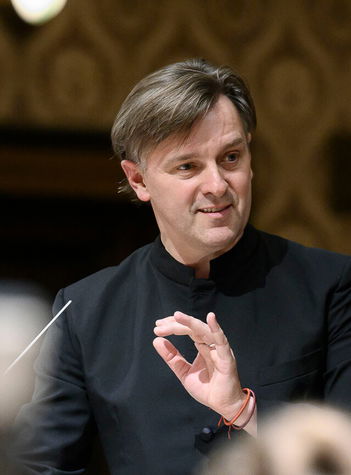
An inspirational force, particularly in Czech music, Tomáš Netopil was Principal Guest Conductor with Czech Philharmonic from 2018-2024 performing regularly on tour and at concerts in the Rudolfinum Hall in Prague where he continues to conduct the orchestra’s New Year concerts which are live televised. In 2023/2024 season, Tomáš Netopil conducted opera productions including Janáček’s Jenůfa at the Hamburg Staatsoper and Dvořák’s Rusalka at the Prague National Theatre as well as symphonies with Frankfurt Opera Orchestra, Janáček Philharmonic Ostrava, Naples Philharmonic and Fort Worth Symphony Orchestra.
Opera productions in the 2024/2025 season include Mozart’s La Clemenza di Tito at the Grand Théâtre de Genève, Die Zauberflote with the New National Theatre Foundation, Tokyo and Don Giovanni with Oper Köln. Netopil explores a wide range of symphonic repertoire in engagements with Oslo Philharmonic, Antwerp, Kuopio and Sydney Symphony Orchestras, Hong Kong Sinfonietta and Accademia Nazionale di Santa Cecilia. This season sees a welcome return to L'Orchestre Philharmonique de Monte-Carlo as well as a debut with Orchestre National des Pays de la Loire. Another return is to Concentus Musicus Wien which builds on his work with period ensembles. As part of the Prague Spring Festival, Netopil will delight audiences with an authentic production of Mozart’s Requiem.
Seven years ago, Tomáš Netopil created the International Summer Music Academy in Kroměříž offering students both exceptional artistic tuition and the opportunity to meet and work with major international musicians. In summer 2021, in association with the Dvořák Prague Festival, the Academy established the Dvořákova Praha Youth Philharmonic with musicians from conservatories and music academies, coached by principal players of the Czech Philharmonic. Tomáš Netopil has held a close relationship with the Dvořák Prague Festival for some time and was Artist-in-Residence in 2017, opening the Festival with Essen Philharmoniker and closing the Festival with Wiener Symphoniker in Dvořák’s Te Deum.
Tomáš Netopil’s discography for Supraphon includes Janáček’s Glagolitic Mass (the first ever recording of the original 1927 version), Dvořák’s complete cello works, Martinů’s Ariane and Double Concerto, and Smetana’s Má vlast with the Prague Symphony Orchestra with whom he’ll become Chief Conductor and Music Director from 2025/2026 season. During his tenure in Essen, his releases included recordings of Suk Asrael and Mahler Symphony Nos. 2, 3 6 and 9.
From 2008-2012 Tomáš Netopil held the position of Music Director of the Prague National Theatre. He studied violin and conducting in his native Czech Republic, as well as at the Royal College of Music in Stockholm under the guidance of Professor Jorma Panula. In 2002 he won the 1st Sir Georg Solti Conductors Competition at the Alte Oper Frankfurt.
Wolfgang Amadeus Mozart
Symphony No. 36 in C major, K 425 “Linz”
Although one reason why Wolfgang Amadeus Mozart became one of the greatest composers of all time was undoubtedly his father Leopold, the relations in the Mozart family between father and son were not always idyllic. A strict father, Leopold knew his less disciplined son all too well, and he did not want to give up control over the young man’s life even after Wolfgang had resettled in Vienna definitively in 1781. One of the tensest situations between the two men arose over Wolfgang’s plans to marry the singer Constanze Weber. Leopold did not approve of the decision, but the wedding proceeded on 4 August 1782 without his consent. Wolfgang and Constanze did not visit Leopold as a married couple until the summer of 1783, a year after the wedding, when they journeyed together to Salzburg, the composer’s birthplace. Relations between father and son seemed to have been mended by then, although Wolfgang’s sister Nannerl, for example, continued to think of Constanze as an unsuitable match for her brother. Music history remembers this journey mainly because of the return to Vienna, during which the couple stopped in Linz. It was there that the Symphony No. 36 in C major (“Linz”) was written at the suggestion of Count von Thun.
“I haven’t got a single symphony along with me”, Mozart wrote to his father from Linz when he learned that the count was interested in having a work by Mozart performed at an upcoming concert. True to his reputation, however, the composer wrote an entirely new work in just four days, achieving a level of quality equalling his finest symphonies. In fact, the Linz Symphony was the direct predecessor to Mozart’s greatest symphonic works. Authorship of the Symphony No. 37 was incorrectly attributed to Mozart, so the next in order is the Symphony No. 38 (“Prague”), followed by the stellar triptych of symphonies from the summer of 1788. Although written in haste, Symphony No. 36 is an extraordinarily inventive composition, even containing elements that the composer did not routinely employ. The most striking new feature is the slow introduction to the first movement; this is the very first time that Mozart employed this formal design. The pensive Adagio that opens the first movement gives way to an energetic, brighter Allegro spiritoso with its exceptionally lively main theme. The second movement is a stylisation of the sicilienne, a slow Baroque dance, from which Mozart mainly borrows the kinetic elements of tempo and metre (characteristic 6/8 time) along with its dotted rhythm. However, the music is much more structurally complex than a typical pastoral sicilienne. The third movement is a Menuet that is especially admired for the beautiful oboe and bassoon writing in the Trio. The Symphony then ends with a sparkling Presto. Besides the performance in Linz, Mozart’s Symphony No. 36 was probably heard during the composer’s lifetime in Salzburg and Vienna as well as in Prague when the composer stayed there in 1787.
Bohuslav Martinů
Ariadne, concert performance of the opera, H 370
Two factors strongly influenced the last decade of Bohuslava Martinů’s life: the rise of communism in his native Czechoslovakia, and his return to Europe, specifically to Switzerland, where he later died. His long separation from his homeland, worsened by awareness that he could never return because of the new regime, caused him intense pangs of nostalgia that were also quite clearly reflected in his music, mainly through the use of elements he had been employing throughout his career that stamped the music with a “Czech sound”. His attention began to turn back to melodic and harmonic procedures derived from Czech folk music. Also during this period, the composer’s musical language attained a certain organic synthesis as a summation of his creative development with unprecedented seriousness and complexity. Hints of folk music are now mingled with the procedures of Neoclassicism, and greater attention is devoted to formal design, often pointing in the direction of a freer, more through-composed approach. Among the most important works of this period are the Symphony No. 6, the Piano Concerto No. 4, and also operas, which Martinů began composing again in the 1950s after a rather long interruption.
Although Bohuslav Martinů’s operas are not staged often, his works in the genre are definitely deserving of attention. Among the most important are Hry o Marii (The Miracles of Mary), Julietta aneb Snář (Julietta, or The Key to Dreams), and Řecké pašije (The Greek Passion), which he completed in its final version just a few months before his death. While he was working on the grandiose Greek Passion, Martinů managed to write yet another opera (although rather more modest): the one-act opera Ariane (Ariadne). The composer said he devoted himself to the work as a break from The Greek Passion, and he went so far as to call it a “light little comedy”, although the description is not very fitting for the story derived from ancient Greek mythology. Martinů finished Ariadne in 1958 after just a month of work, but he did not live to witness the premiere. The work was first heard in Germany in 1961, and it was given its Czech premiere by the Chamber Opera of the Janáček Academy of Performing Arts in Brno in 1964.
Martinů based the libretto of Ariadne on the play Le Voyage de Thésée by the French dramatist Georges Neveux, an author whose works exhibit a notable tendency towards Surrealism. This was the second time Martinů chose a subject by Neveux for a composition—the first instance had been Julietta, or The Key to Dreams. There are surrealistic elements in Le Voyage de Thésée as well, but for the most part Neveux is toying with an interesting psychological connection. To the ancient legend, he adds the idea that Theseus and the Minotaur have much in common, almost in the sense of an alter ego or split personality. Therefore, when Theseus kills the Minotaur, he also destroys a part of himself: specifically, that part of him that is “responsible” for his love for Ariadne. Ariadne herself, it so happens, is also a bit uncertain—her love for Theseus could easily be love for the monstrous Minotaur. Martinů carried this aspect over into his libretto. Instead of making Theseus the hero, however, he chooses Ariadne as the strong character. The dominance of the female role is not just a matter of the symbolic change to the title: Ariadne’s lament is clearly the pivotal number in the whole opera, accounting for about a quarter of the work’s entire duration. The bravura aria full of intense emotion is said to have been inspired by the singing of none other than Maria Callas. One of the coloratura passages rises to a high D sharp above the treble clef staff. The opera is not continuously through-composed, and it can be divided into several separate numbers, but the composer transitions rather freely between the styles of narrative recitatives and of arioso singing, which are less clearly differentiated than in an opera strictly divided into numbers. The work is divided into three sections, each of which is preceded by an orchestral sinfonia. The first part deals with the meeting of Ariadne and Theseus, and most of it consists of their volatile duet. The subject matter of the second section is the clash with the Minotaur, and the third part features Ariadne’s lament, confessing her feelings after Theseus’s departure.
In the music of Ariadne, Martinů follows in the footsteps of Claudio Monteverdi, composer of what was apparently the first opera about Ariadne (L’Arianna, 1608). In general, Baroque elements are employed, such as a stylisation of accompanied monody (monophony with a simple instrumental background). The opera’s musical language is therefore described as Neo-Baroque, but it is reminiscent of the composer’s Neoclassical works in many ways. Martinů keeps the opera within the bounds of expanded tonality, but the seemingly transparent classical harmonies are often coloured with ninth chords or simple, condensed sonorities. The orchestration becomes an important element determining the form and expressive content. The tutti orchestra is used sparingly, mostly in the three sinfonias. Percussion instruments are often used to describe the mood (the snare drum sounds especially ominous), while xylophone and celesta highlight the unclear boundary between imagination and reality. There are even passages entirely without instrumental accompaniment, mostly assigned to the ensemble of the Six Youths of Athens. Instead of a complicated handling of motifs and themes, Martinů give preference to the ordering and repetition of small motifs and figures, and reminiscences also occur. We hear a fanfare motif (that sounds absurdly optimistic given the opera’s subject matter) several times in the first sinfonia, and it actually frames the whole opera. We also recognise something like an Ariadne motif, a harmonically evocative figure for the strings centred in E minor, which is heard both before Ariadne’s first entrance and before her difficult concluding aria.
Principal guest conductor Tomáš Netopil will be leading the Czech Philharmonic for the first time in Mozart’s Linz Symphony. However, the bulk of the programme will consist of a concert performance of Bohuslav Martinů’s one-act opera Ariane. It will be sung in the original French.